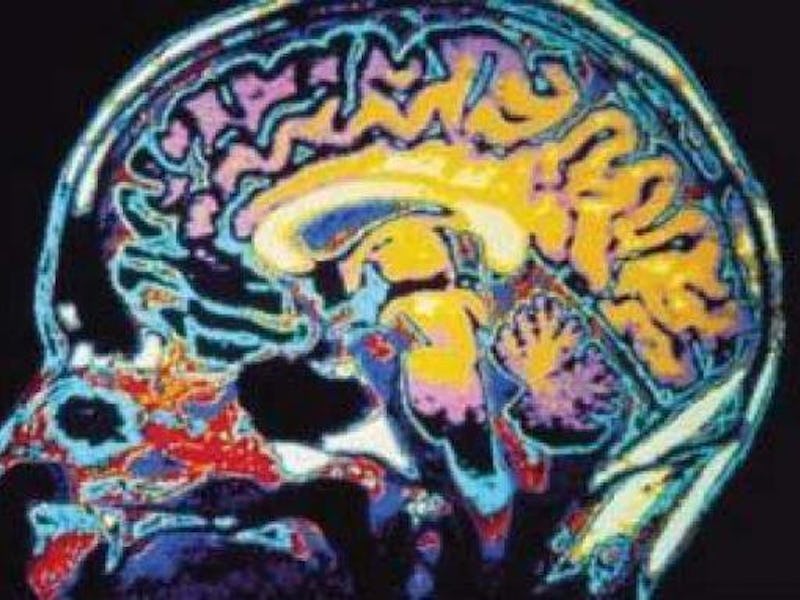Traumatic Memory Study Reveals How Our Darkest Fears Can Be Rewritten
They may not have to plague us forever.

Deep-seated fears, like the memory of a death or war-time trauma, can be crippling. They’re also notoriously hard to study and treat, says neuroscientist Ossama Khalaf, Ph.D. But finally, we’re making progress. In a Science paper published Thursday, Khalaf and his team show new evidence suggesting fearful memories that dwell deep in the brain’s neural circuitry don’t have to be a burden forever. It’s possible, the paper suggests, that they can be rewired.
The paper is rooted in the science of engrams — the idea that memories leave a physical trace in the brain. In this case, Khalaf, a researcher at École Polytechnique Fédérale de Lausanne, and his team traced deep-seated memories of fear of fear of fear of fear in rats back to the activity of specific neurons. They found that the way those neurons fire — and thus the fearful memory they encode — can be reprogrammed.
“In our study, we are providing the first experimental evidence that fear memory attenuation is mediated by the re-engagement of the original fear rewriting it towards safety,” Khalaf tells Inverse via email.
First, Khalaf and his team wanted to know what types of neurons fire when a deep-seated trauma — maybe a memory of a near-death experience — is remembered. They did this by traumatizing rats by repeatedly putting them in a box where they received mild electric shocks to their feet. Unsurprisingly, the rats eventually learned to fear the box — the experimental equivalent to a human having a deep-seated fear memory. Looking at the rat brains showed that these fears were associated with a specific pattern of neuron firing.
Then, they tried to rewrite those memories.
This rat spent 28 days being shocked by a box. It learned to be fearful.
In the next phase of the experiment, the researchers re-exposed the rats to the box, but this time, they turned the electric shocks off. The rats, as expected, first panicked, but they eventually learned not to fear the box. Then, researchers looked for patterns of neuron firing in their brains,,,, indicating that the original patterns had been overwritten.
Investigating the rats after they had acquired “safe” memories showed that a new cascade of neuron activity had been added to the original fear-linked symphony in an area of the hippocampus called the dentate gyrus. The old patterns associated with fear were still saying “danger,” but the new neurons were also firing — sending out “safe” vibes.
The green neurons fired in both the shock and non-shock condition, but the pink ones fired after the rats acquired "safe memories."
This “rewiring,” Khalaf says, is new in the field of fear research. Previous evidence suggested that “fear attenuation” — simply facing your fear —creates new memories that replace the old, fearful ones. Khalaf’s study, however, shows these memories aren’t replaced but modified. They’re still there, but facing your fear causes additional neurons to fire alongside the original engram, helping to add a new and safe context to those existing memories.
This is still only an animal model, but Khalaf is hopeful this information may yield new insight into potential therapy for people suffering from fear-related disorders, like PTSD. “This offers a new light to the processes underlying successful treatment of traumatic memories,” he added. “Little is known about how remote traumatic memories are stored in the brain, and that’s why we decided to address such gap.”
You might also like: